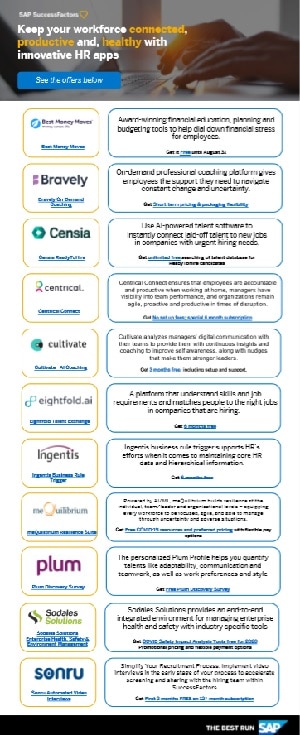This is a year that will not soon be forgotten, where all aspects of life were turned upside down. In 2020, COVID-19 has caused the world to rethink human interaction and forced companies to shift how they do business.
Had the pandemic hit 10 or even five years ago, the response and recovery would look much different. Individuals and businesses have responded with remarkable resiliency providing hope for a better future.
Every organization, no matter its size or business model, has had to reexamine how it does business and keeps its workplaces safe. Ensuring hand sanitizer is readily available, surfaces are regularly disinfected, and layouts are configured so employees and customers can maintain proper social distancing are just the basics. Introducing touchless door systems for conference rooms, bathrooms, and even elevators; offering flexible work schedules; and making it possible for workers to pre-order meals from the cafeteria so they can really “grab and go” and not spend extra time waiting in lines are further examples of what companies are doing from an infrastructure point of view.
These changes impact the employee experience. Think of the experience of workers returning to their jobs on the factory floor or in the office. Will they be required to have their temperature checked daily? If so, how long will the wait be and will they end up lining up outside in unpleasant weather to do so? Or how are employees handling the added stress of so much change and uncertainty? They may be caring for a sick parent, trying to homeschool their children, or dealing with a partner whose income has been cut. On top of that, the interactions employees have with others that make work more enjoyable have changed or gone away. Lunch together at the cafeteria, an impromptu coffee meeting, or simple chitchat between office mates or workers on the production line are different post-pandemic.
For HR leaders, it is necessary to take all of these things into consideration to keep employees engaged and productive.
Luckily, technology has advanced to the point where it is possible, for the most part, to remain connected, productive, and healthy. Technology – apps in particular – are helping to adapt to living and working in a pandemic. Maybe it is an app to have a face-to-face virtual party with friends, a food delivery app to get meals delivered, a grocery store app to stock up on staples, or streaming services to access more shows, movies, and music.
Just like adapting to new lifestyle technology, employees are experiencing a change as well. Whether they’re working through crisis, working from home (while working through crisis), or working to reestablish momentum, employees need to be ready for anything. They must be ready to switch gears and, if necessary, switch roles. They must be ready for challenges at all levels and change from every direction.

SAP can help put technology and tools to work and adapt HR to fit this current reality – all while putting pieces in place that can support when business is down and when it’s booming. The SAP partner ecosystem is comprised of innovators and disrupters that have accelerated and nurtured more than 250 partner apps in the human experience management (HXM) space focused on critical people topics, such as diversity and inclusion, mental health, well-being, skills development, purpose, recruiting, and more. These partner solutions offer seamless integration into SAP SuccessFactors solutions to leverage and expand the investment and to discover, try, and buy on SAP App Center. Quick implementation and fast time to value allows the agility to find solutions that work.
Examples of these incredible apps include solutions that:
- Give employees the power to instantly track and manage their personal finances to dial down financial stress.
- Enable HR to quickly find, assess, and accurately match candidates to fill gaps during a time of rapid re-skilling, filling roles in high demand, or supporting laid off workers with new opportunities.
- Offer employees professional coaching for stress management, emotional support, and actionable guidance.
- Allow organizations to manage security risks to systems, facilities, areas, critical assets, and people with unified access control governance.
Explore the open ecosystem of partner apps to learn how these solutions can easily extend the SAP SuccessFactors portfolio to help solve business challenges and delight employees.



